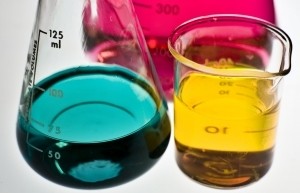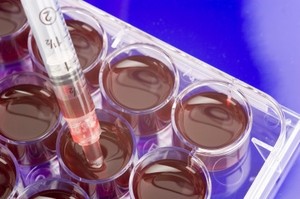Have you ever wondered how the seemingly incompatible elements of water and oil are married together in the world of pharmaceuticals? Or perhaps you've pondered the evolution of medication forms, from liquids to water-soluble tablets? Well, you're in for a treat! This article delves into the fascinating science of pharmaceutical formulations, particularly focusing on what can be added to a mixture of water and oil to bind them together in a medication base.
Additionally, we'll take a stroll down memory lane to discover the first medication to be sold in the form of water-soluble tablets. Plus, for those who are curious about the practicalities of medication preparation, we've got insights on how a prescription calls for 15ml of water to reconstitute a medication in a 20ml vial. Buckle up for an enlightening exploration!
The Magic Behind Merging Water and Oil in Medication Bases
When it comes to creating effective and safe pharmaceuticals, the challenge of mixing water and oil—a duo notorious for their reluctance to blend—is one that scientists have ingeniously overcome. The secret ingredient? Emulsifiers.
 You might be wondering: What can be added to a mixture of water and oil to bind them together in a medication base? Well, emulsifiers are the unsung heroes behind this magic. These substances have the unique ability to sit at the interface between oil and water molecules, encouraging them to coexist peacefully within the same formulation.
You might be wondering: What can be added to a mixture of water and oil to bind them together in a medication base? Well, emulsifiers are the unsung heroes behind this magic. These substances have the unique ability to sit at the interface between oil and water molecules, encouraging them to coexist peacefully within the same formulation.
This not only ensures a homogeneous and stable product but also improves the delivery and absorption of the medication into the body. By harnessing the power of emulsifiers, pharmaceutical experts are able to create complex formulations that are both effective in treatment and pleasant in texture.
The Evolution to Water-Soluble Tablets: A Milestone in Medication
In the ever-evolving world of pharmaceuticals, the development of water-soluble tablets marked a revolutionary milestone.
- Imagine the scenario: previously, patients had to navigate the challenges of swallowing large, difficult pills.
- Then came the game-changer, the first medication to be sold in the form of water-soluble tablets, transforming the experience of medication intake.
This innovation not only enhanced patient convenience and compliance but also improved the speed and efficiency of medication absorption into the bloodstream. Water-soluble tablets dissolve or disintegrate quickly in water, making them easier to ingest and more palatable for a wide range of patients, including those who have difficulty swallowing.
This advancement underscores the pharmaceutical industry's commitment to patient-centered innovation, simplifying medication administration and enhancing the therapeutic effects of drugs, thereby significantly improving patient outcomes.
Mastering Medication Preparation: Reconstituting with Water
The precise preparation of medication is crucial for ensuring its effectiveness.
 Specifically, when a prescription calls for 15ml of water to reconstitute a medication in a 20ml vial, understanding the correct process is essential. This practice, common in medications that are stored in powder form to maintain their stability and potency, requires the addition of a specified amount of water to transform it into a liquid form suitable for administration.
Specifically, when a prescription calls for 15ml of water to reconstitute a medication in a 20ml vial, understanding the correct process is essential. This practice, common in medications that are stored in powder form to maintain their stability and potency, requires the addition of a specified amount of water to transform it into a liquid form suitable for administration.
The process involves carefully injecting the correct volume of sterile water into the vial, ensuring that the powder dissolves completely without creating air bubbles or foam, which could affect the dosage accuracy. This technique not only preserves the integrity of the medication but also guarantees that patients receive the full therapeutic benefits. By mastering the art of reconstitution, healthcare professionals ensure that medication is prepared safely and effectively, reducing risks and optimizing patient care.
Unraveling the Ingredients: Binding Agents Used in Pharmaceutical Formulations
The world of pharmaceuticals is akin to a complex puzzle, where every ingredient plays a crucial role.
Among these, binding agents are pivotal in ensuring the stability and efficacy of medication bases, especially when it comes to combining water and oil. These agents act as the glue that holds the formula together, preventing separation and degradation.
They come in various forms, including natural gums, starches, and synthetic polymers, each selected based on the specific requirements of the medication.
Effectively, what can be added to a mixture of water and oil to bind them together in a medication base? The answer lies in choosing the right binding agent that not only facilitates the merging of these incompatible substances but also maintains the desired consistency, release rate, and absorbability of the medication. By meticulously selecting and utilizing these binding agents, pharmaceutical scientists are able to create cohesive, stable, and effective medicinal formulations.
Turning Liquids into Pills: The Science Behind Soluble Tablets
The transformation of liquid medications into convenient, water-soluble tablets is a fascinating feat of pharmaceutical science.
 This process, pivotal for medications like the first to be sold in water-soluble tablet form, involves intricate techniques that alter the physical form without compromising the medicinal properties. The science behind soluble tablets involves creating a concentrated version of the active ingredients, then integrating them with excipients that facilitate dissolution in water. This not only makes the medication easier to ingest but also allows for quicker absorption into the bloodstream, enhancing its effectiveness.
This process, pivotal for medications like the first to be sold in water-soluble tablet form, involves intricate techniques that alter the physical form without compromising the medicinal properties. The science behind soluble tablets involves creating a concentrated version of the active ingredients, then integrating them with excipients that facilitate dissolution in water. This not only makes the medication easier to ingest but also allows for quicker absorption into the bloodstream, enhancing its effectiveness.
Additionally, when a prescription calls for reconstitution, as in the addition of 15ml of water to a medication in a 20ml vial, the underlying principles of solubility and stability are directly applied. This technology represents a significant advance in medication delivery systems, offering a seamless blend of convenience and efficacy for patients and healthcare providers alike.